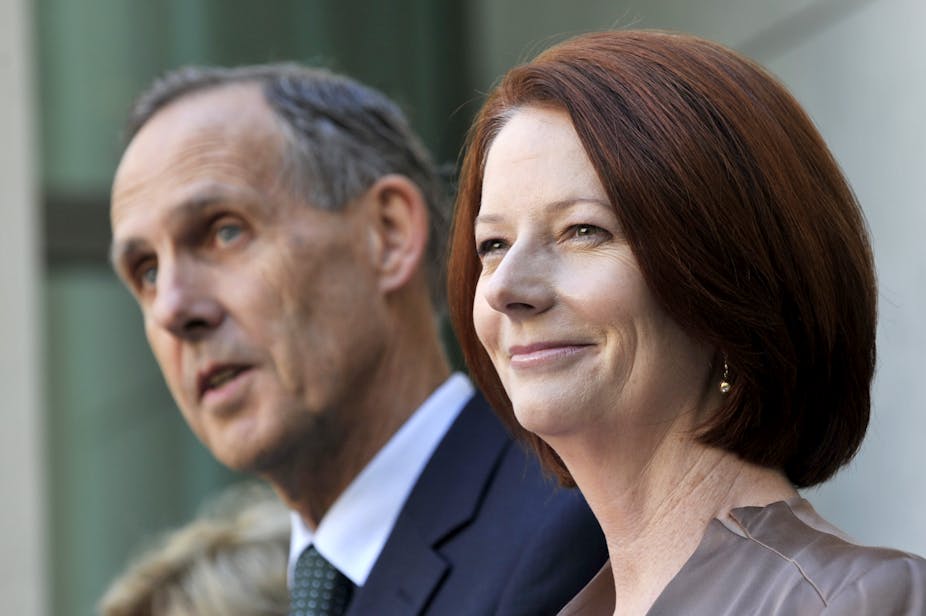It’s both heartening and perplexing to read in the press about the ALP’s increasing determination, in the wake of the NSW election result, to make clear to voters that Labor is not allied to the Greens.
It’s heartening because it has become obvious since its 2010-13 “fling” with the Greens that the electorate will punish any failure by Labor to mark its independence. More than that, it’s heartening because a political party that isn’t sure what it stands for isn’t really a party.
It’s perplexing, on the other hand, because there seems to be considerable uncertainty within the party about where to look to find an independent progressive direction that can win elections. Has the current generation of Labor thinkers forgotten the names Bob Hawke and Paul Keating? Surely not.
These two leaders knew what to do with all three letters in “ALP”: a strong and confident Australia, a strong and confident workforce, and a strong and confident party. This was and remains widely attractive.
They strove for a strong and progressive Australian society, one that treated workers and employers as equally important. They convinced a majority of Australians that progress towards a stronger, fairer society would necessarily include a stronger, fairer economy – even if it entailed privatisation of some industries and assets. For them, a strong Australia was to be fully engaged in the world.
Their position might well be summed up in the following quote:
A progressive … [society was] the necessary corollary of a successful world policy … It was essential to win the workers’ positive cooperation with the government … [What was needed was] a progressive … policy based upon self-determination and self-responsibility … [This] could have sense only if it placed the workers in an economic and social take-off position so that they could compete economically and socially with the corporate leadership.
As it happens, this is a quote from a book by Wolfgang Mommsen called Max Weber and German Politics, 1890-1920. Weber is better known now as a founder of sociology, but his sociology was built upon his deep understanding of politics.
Strange as it may sound, Hawke, Keating and Weber are on the same page when it comes to strengthening a progressive political party.
Weber is widely admired for stressing the importance to any society of its culture – its roots in its languages, its peoples and its land. But what is usually ignored is the extent to which he believed that society and culture can flourish only when the economy is strong, which in turn can flourish only when the nation is politically and militarily strong.
It is not too difficult to turn this somewhat unlikely Hawke-Keating-Weber approach into three steps the ALP might take if the party is to find its way out of the predicament it has dug itself into.

First step: do not shy away from a Hawke-Keating-type determination to base Australia’s economic strength on the belief that capital and labour are more often than not on the same side. Labour gains when capital gains, so much so that labour should not be afraid to contribute to and control an independent supply of capital – as it is doing through superannuation, for example.
Second step: speak with confidence about Australia as a nation and do not stoop to opposing just for the sake of opposing. This doesn’t look like strength and confidence; it looks like petty schoolyard squabbling.
If the ALP really does think the electorate wants them to “get even” with Tony Abbott for his relentless negativity as opposition leader, then all hope is lost. The electorate has never been interested in punishing an opposition leader simply for leading the opposition.
Third, in formulating its suite of policies, there is no need to artificially distance the ALP from all objectives that the Greens promote. The ALP is, without doubt, genuine about the need to protect the environment, the need to find the best possible ways to reduce Australia’s carbon emissions and so on.
What distinguishes the ALP from the Greens is not the absence of a commitment to the environment. Instead, it is the presence of a commitment to the environment within the context of maintaining Australia’s political, military and economic strength on behalf of all citizens. This is an approach not shared by the Greens.
The Hawke-Keating features of the ALP discussed here – which happen also to be features of Weber’s thinking about how a progressive party should behave – seemed in the 1980s and early 90s to be features that would make the party the dominant centrist party of government for much of the 21st century. It still could be.
Despite the lost opportunity of the 2007-13 period (a loss in part caused by the global financial crisis and in part self-inflicted), this legacy is still sitting there waiting for the ALP to take it up in full.
But the other side of this coin is that the legacy is still there to be selectively diluted, which seems to be the ALP’s wont at present. If this continues it will be a great shame – not just for the ALP but for Australia as a whole.

